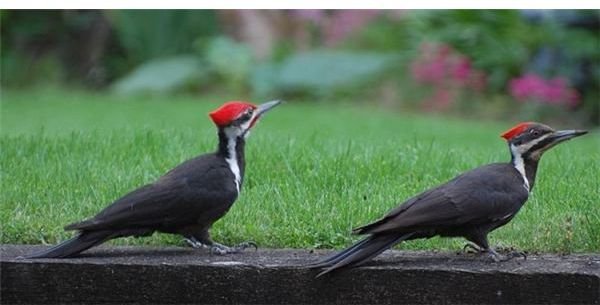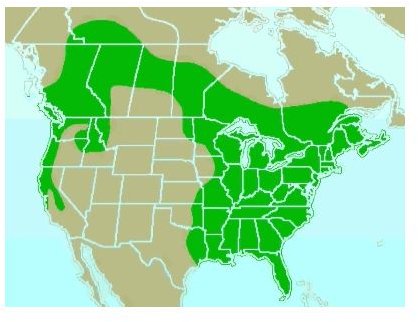Pileated Woodpecker Facts: Learn Where The Pileated Woodpecker Lives, What It Eats, & More
The Pileated Woodpecker
The pileated woodpecker is a large North American bird found in the eastern states, along parts of the pacific coast, and across Canada. Their numbers declined in the earlier days when many eastern forests were cleared but began to rebound, slowly and steadily, around the mid 20th century.
The pileated woodpecker is now considered the largest woodpecker in North America. Unfortunately, the two larger woodpeckers (the ivory-billed woodpecker and the imperial woodpecker) are both believed to be extinct. Below are more interesting facts about the pileated woodpecker.
Description

The adult pileated woodpecker is 16-19 inches in length, 8-12 ounces in weight, and has a wingspan of 26-30 inches. They have black bodies, white under their wings, a red crest, white stripes across both sides of their face and down the neck, and yellow eyes. The male has red on the front of his crown and a red line (“mustache”) from the bill to his throat. The female does not. Juveniles have shorter crests and brown eyes.
Habitat
Pileated woodpeckers prefer to live in forests with large trees but have recently adapted to areas closer to civilization, including the outskirts of large cities. They will make large holes in dead hollow trees to roost and nest in. Every year they will abandon these cavities and construct a new one elsewhere within their territory. This benefits other bird species who will later move in.
Diet
The pileated woodpecker chips out large rectangular holes in trees in search of food, particularly carpenter ants and beetle larvae. Besides insects, they will also feed on fruits, nuts, and berries.
Reproduction
A male and female pileated woodpecker will mate for life. They stay together throughout the year and both care for the young. The female will lay 3-5 white eggs. Incubation lasts 12-14 days and the young will fledge in 26-28 days.
More Information
The following are more interesting pileated woodpecker facts:
• When boring a hole in a tree, the loud drumming sound the pileated woodpecker makes can be heard far away.
• Small dead trees are known to break in half from the large holes made by pileated woodpeckers.
• Unlike many other birds, the pileated woodpecker will move eggs that fall from the nest to another site.
Photo Credit
Pileated Woodpecker - Distribution image courtesy of https://commons.wikimedia.org/wiki/File:Pileated_Woodpecker-rangemap.gif
Male and Female Pileated Woodpeckers image courtesy of https://commons.wikimedia.org/wiki/File:PileatedWoodpeckerPair.jpg
